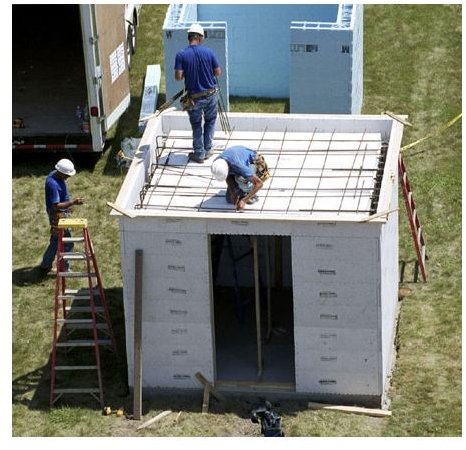Low Cost Housing is Also Environmentally Friendly
The Need for Housing
Since time immemorial the need for human beings to find shelter has always been present. The necessity to be guarded from the elements, harsh weather conditions, and the need to keep wild animals at bay first led to humans looking for shelter in caves, which were probably the first real efforts at housing for mankind. In places where such caves were not available human beings made use of the branches and leaves of trees to form some shelter for themselves. The advantage of such structures was that they were easily constructed at any place and could be easily abandoned when the time came to move on, as early civilization was mainly nomadic. It was only when man learned the art of farming and growing his own food instead of foraging and hunting that man really felt the need for a permanent settlement and housing. The initial attempts for building houses led to mud and thatch houses, stone structures, and probably log cabins. This involved the use of materials easily available at the place where the housing was required, and this is still the basic concept that can dominate the idea of low cost housing even today.
Image Source: Wikimedia
The Concept of Low Cost Housing

Housing is a basic requirement for people, but in underdeveloped countries where most of the people live on very meager incomes, such housing can rarely be affordable. A guideline for affordable or low cost housing indicates that housing should not cost more than thirty percent of the gross income of a household. This would be the amount that the householder will have to pay every year as cost of any loan that he has taken to build the house.
Low cost housing is the concept for building homes using effective budgeting techniques to help to reduce the cost of construction. This can be effectively done if materials that are available locally are used as this will help to reduce transportation costs. Locally available materials are also those that the artisans are familiar with and this ensures that is no cost in training or adaptation required for any new material. Technologies can be introduced to improve the material being used in construction and the skills required for translating them into parts or elements of a house. Low cost housing also involves proper management of resources, whether in terms of materials, labor or money so that end product has the lowest cost because of efficiencies that are used during building.
Image source: Wikimedia
Costs Involved In Building Houses
The main constituents of costs in building houses are land, materials, labor costs, and incidental costs.
Land
The cost of land depends mainly on location and can be very high in cities and heavily populated areas. To offset the costs of land in cities, low cost housing requires that buildings have to be planned as vertical high rises so that land cost is distributed over larger numbers of houses. Where land costs are lower, like in rural and semi urban areas, the larger component of cost can then be the cost of materials and labor.
Material costs
Normally material cost accounts for about 75-percent of the cost of a building, but the use of local materials can help to reduce this component to more manageable proportions.
Smaller single storied structures can be built in locally available mud or stone to really decrease the cost of building. Mud houses are very common in rural areas and architects like Laurie Baker have made the use of mud as a building material to build well designed homes that have removed the stigma from the material. Problems with mud as a construction material pertain to the high maintenance costs as the material requires constant attention. Local stone, quite often quarried at site can also help to reduce material costs. The material however does require skilled labor if it has to be properly used. Bamboo is another material that can be used for low cost housing. Engineers in India have even adapted bamboo to use as reinforcement for roof slabs in place of the far more expensive reinforcement steel bars.
In India a number of low cost housing projects in cities have been developed using pre-cast and prefabricated components whose mass production helps to reduce costs. In Karnataka, India, pre-engineered panels using rice husk with binders have been used for building housing with buildings of up to four stories. The weather in India is not very kind to pre-cast and assembled forms of housing as a lot of attention and skill is required to create watertight joints.
Labor costs
This is one commodity that is relatively cheap in many countries because of the vast pools of workers always available for construction. In villages, where people build their own homes, the labor component may be almost considered as nil, as it is quite often the householder and his family which functions as such.
Employing the proper skilled laborer who gives high output is another way to reduce the cost of this element. Insufficient attention is paid to this aspect.
Incidental costs
Incidental costs can be the cost of making plans, getting approvals, and certifications and completion formalities. This cost element is high for multi-storied buildings due to the technical and other expertise that is required for such buildings.
References
- Civil Engineering Portal - Low Cost Housing
- John Moehring - Low Cost Housing Construction in Earthquake Zones
- Laurie Baker - Architectural principles
